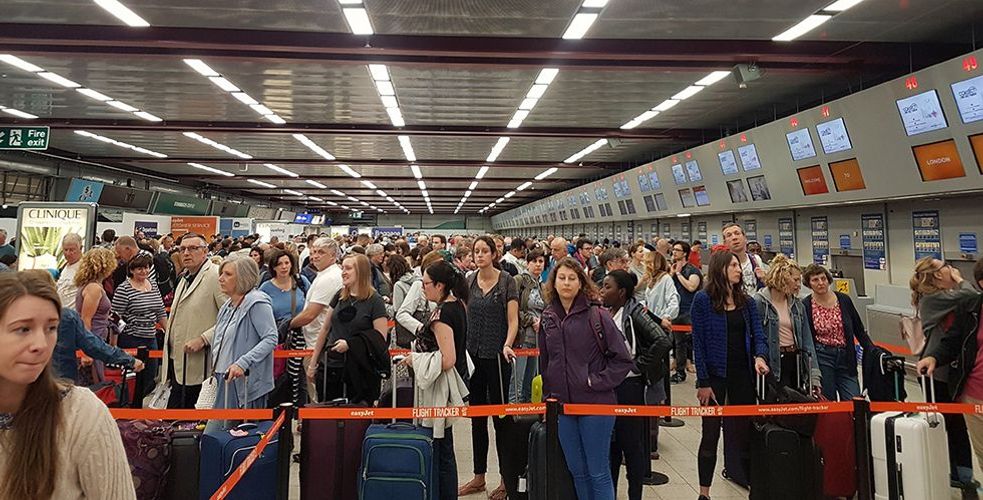Doctor Queue of Paris's Charles de Gaulle airport? Augustin de Romanet

Improving the passenger and visitor experience in France. A monthly index of passenger waiting times, as well as the reasons for abnormal waiting times, at various checkpoints at Charles-de-Gaulle (CDG) and Orly airports will soon be published according to Augustin de Romanet, chairman of Aéroports de Paris, in a statement made to the Journal du Dimanche (JDD). In anticipation of the 2024 Paris Olympic Games, all events causing waiting times of more than thirty minutes will be listed in this instructive census.
Collecting information and sharing it with customers, users and visitors.
In many places that receive the public, passengers or visitors, this type of measure is the basis of strategies for improving the customer experience and providing information to travelers and visitors. Although the Eiffel Tower has not yet done so, Disneyland Paris has and, as a consequence, it charges extra for fast-track tickets (Disney Premier Access Ultimate). Similarly, like the theme park which deploys considerable strategies and resources to monitor waiting time in real time, the French railway, SNCF, has improved its information for travelers in stations.

Taking the pulse of waiting time and explaining its causes is new at Aéroports de Paris.
Interviewed in the Journal du Dimanche, Augustin de Romanet explained that he is very often taunted on Twitter or by SMS because of waiting times, which are perceived as unbearable. For example, the index revealed that in January, there was an average of 50 minutes delay for 8,650 passengers during passport and identity controls. Usefully, the reasons for these waiting times will also be shared, although they are not always the responsibility of Roissy CDG. A breakdown in the Ministry of the Interior's computer software or insufficient staffing levels were also the cause of delays. « Still, for more than 90% of passengers in January, waiting times did not exceed 10 minutes," said the executive.
With the 2024 Olympic Games in mind, the ministry and the teams of Aéroports de Paris are being attentive, sharing data in an effort to understand the reasons for long waits. Although no press release has been made available, ADP's official website has announced the official launch of this research with the involvement of the Ministry of the Interior.
Is this a novelty, a step forward?
"Not really. In 2016, many international airports, such as Schipol, Dublin, Cincinnati and Oslo were already displaying overall real-time waiting times to passengers, as well as waiting times to catch a taxi," explains H. Caufield, a specialist in the subject. "What is new is the willingness to share information about the origin of this wait and not to fake the information. This will put the clock right. For example, Roissy-CDG can be singled out for criticism, but it’s a whole chain of actors and equipment — such as the Parafe airlocks, facial biometrics or the lack of personnel at the PAF — that can explain these delays. One thing is certain, which is measured everywhere: sharing information with visitors and passengers reduces stress. Anticipation is the second major area of work on these issues. »
Waiting times for boarding formalities, checkpoints or baggage collection are some of the items that form the basis of the world rankings published on the best airports in the world, such as Skytrax. Indeed, Roissy-CDG moved up from 6th to 5th place, while Orly moved up 7 places in its category to 39th place. The preferred airport by passengers (Best Airport By Pax, Passengers), in the category of large airports, is Istanbul with more than 60 million passengers. Tokyo Haneda is the preferred airport in the category of 50-60 million PAX, followed closely by Roissy-CDG, ranked 2nd.
Waiting time, the waiting line, the item to be monitored, the key indicator of the customer experience!
Manuel Jacquinet, the author and editor of the only book in France devoted to the subject, will reissue « Contre Toute Attente » at the end of 2023. "In the best equipped theme parks, visitors can know and visualise the waiting time imposed for each attraction and thus deploy alternative strategies, if they’re in a hurry. Some information sites, such as Queue.park.com or Queue-times.com, aggregate open data from 122 parks around the world, making it possible to observe waiting times in near real time. In reality, any shopkeeper, administration or manager of a tourist attraction has an interest in working on these items: measuring and reducing waiting time or deploying strategies to make waiting less stressful or painful. But sociologists can take an interest too. Ever since Covid, the return to physical commerce has enabled citizens and consumers to rediscover the interest and joy of social interaction. Conversation, which can often take place in the queue, is back in fashion and this will be one of the main chapters of the book in its expanded version. Richard Larson, aka Dr Queue, who officiates at MIT, has led the way but I'm sure we'll have more and more researchers on these topics."
Some waiting facts
On 4 March 2023, queues at Roissy-CDG and Orly became longer, and the disturbance was widely reported on social networks, especially as ADP and the PAF were slow to react. The cause was due to a breakdown in the passenger identification computer system, piloted and supervised by the DINUM, directed by Stéphanie Schaer (Interministerial Directorate of Digital).
The Disney Premier Access Ultimate pass, a queue-cutting, all-attraction pass, costs an average of 120 euros per visitor.
Dr Richard Larson, from MIT, has been working for more than fifty years on queues and the strategies for avoiding and making the most of waiting times.
Waiting times for a doctor's appointment, a specialist or a new passport are regularly audited.
In 2012, during the National Airport Quality Conference, the Lyon-Saint Exupéry PAF won an award. Reception, information, controls and fluidity were the items measured at the time which contributed to this measure.
To eliminate the "pain point" of waiting, it’s sometimes more effective not to reduce it.
Indeed, it is often more effective to play on the psychology of those who are subjected to waiting. As demonstrated by the experience of Houston airport in the United States, the number of complaints related to waiting were reduced by the decision to make everyone walk, literally. For instance, several years ago, the management of the Houston airport was already overwhelmed by complaints from travelers, linked to a single problem: the wait for luggage was unbearable. Cartesian management did what any manager would do when faced with this type of problem, given the means: recruit more baggage handlers. The average waiting time was reduced to seven minutes, a figure that many other airports envy. But the number of complaints did not decrease.
So, the analysis of this waiting time was taken a step further and it became apparent that six out of seven minutes were spent in front of the baggage carousels, the conveyor belts where you watch dozens of suitcases pass by while anxiously waiting for your own. Conversely, it took only one minute to get from the arrival gate to the baggage hall. So the airport decided to... move the arrival gates further away. As a consequence, the total waiting time did not change, but travelers now spent six minutes walking and one minute waiting in front of the carousel. The complaints disappeared. While the waiting time remained the same, it was no longer perceived as a pain point because travelers were distracted, busy.
Carousels and mirrors
This story recalls a founding anecdote of wait marketing. In the 1920s, skyscrapers grew taller and taller, accommodating more and more workers who crowded around the lift doors in ever greater numbers and with ever greater impatience. Yet, when the building's tenant companies threatened to leave, the manager decided to install mirrors in the lobbies, instead of adding new lifts. The waiting time did not decrease, but the occupants were now far too busy looking in the mirror to see the time pass. The complaints stopped overnight, and mirrors can now be found next to the lift doors in almost every office building in the world.

Contre Toute Attente, by Manuel Jacquinet and Frédéric Durand, Malpaso Publishers
Read more about the book Contre Toute Attente, here.
Order the book here.





